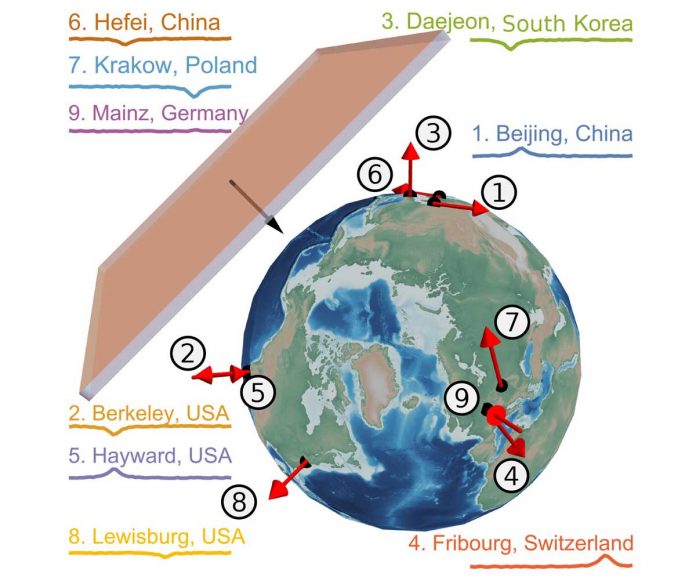PRISMA+Cluster of Excellence at Johannes Gutenberg University Mainz and Helmholtz Institute Mainz researchers have published a comprehensive data on the search for dark matter. They have used a worldwide network of optical magnetometers. Scientists said, dark matter fields produce a characteristic signal pattern which can be detected by correlated measurements.
This can be at multiple stations of the GNOME network. One-month continuous GNOME operation has been analysed and it has not yet yielded a corresponding indication. The measurement allowed the formulation of constraints on the characteristics of dark matter. The research paper has been published in the journal Nature Physics.
Global Network of Optical Magnetometers for Exotic Physics Searches is the full form of GNOME. Magnetometers of GNOME are distributed around the world. The scientists wanted to advance the search for dark matter. It is one of the most exciting challenges of fundamental physics in the 21st century. Many astronomical observations like rotation speed of stars in galaxies and the spectrum of the cosmic background radiation can be explained by dark matter.
The network has 14 magnetometers distributed over eight countries worldwide. 9 magnetometers provided data for the current analysis. The measurement principle is depended on an interaction of dark matter with the nuclear spins of the atoms in the magnetometer. The atoms are excited with a laser at a specific frequency. It oriented the nuclear spins in one direction. A dark matter field can disturb this direction and it is measurable.
The network of magnetometers is important. The earth moves through a spatially limited wall of dark matter. The dancing atoms in all stations are gradually disturbed.
In the current study, scientists’ analyses data from a one-month continuous operation of GNOME. The result was statistically significant signals which did not appear in the investigated mass range from 1 femtoelectronvolt to 100,000 femtoelectronvolt. This means scientists can narrow down the range for such signals to be theoretically found even further than before.
Further research of the GNOME collaboration will focus on improving the magnetometers and the data analysis. Scientists think, continuous operation should be even more stable. It is important to search for signals that last longer than an hour. The alkali atoms in the magnetometers will be replaced by noble gasses. The scientists will give it a name as Advanced GNOME and they are expecting this will result in better sensitivity for future measurements in the search for ALPs and dark matter.

